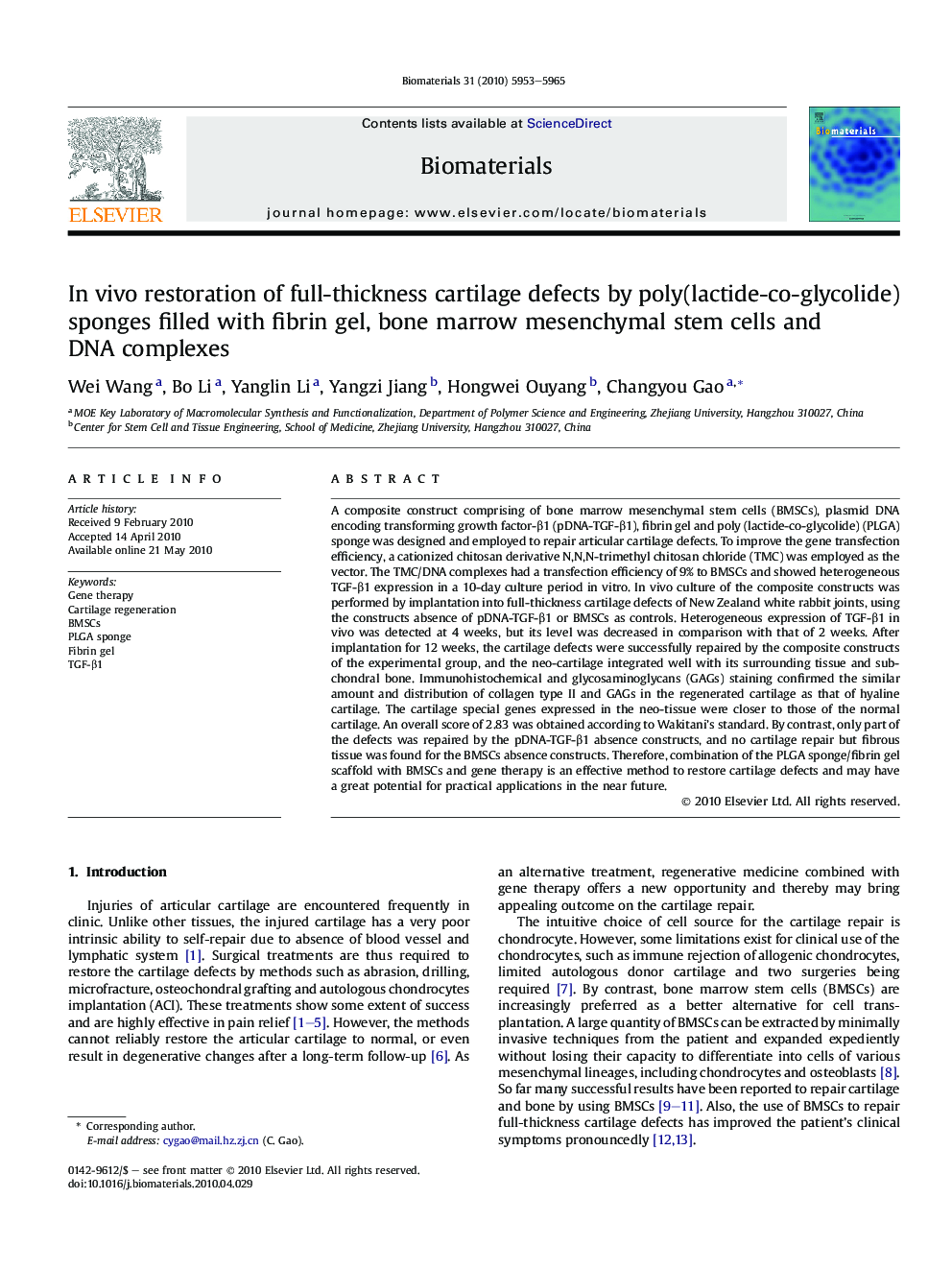| کد مقاله | کد نشریه | سال انتشار | مقاله انگلیسی | نسخه تمام متن |
|---|---|---|---|---|
| 9392 | 628 | 2010 | 13 صفحه PDF | دانلود رایگان |

A composite construct comprising of bone marrow mesenchymal stem cells (BMSCs), plasmid DNA encoding transforming growth factor-β1 (pDNA-TGF-β1), fibrin gel and poly (lactide-co-glycolide) (PLGA) sponge was designed and employed to repair articular cartilage defects. To improve the gene transfection efficiency, a cationized chitosan derivative N,N,N-trimethyl chitosan chloride (TMC) was employed as the vector. The TMC/DNA complexes had a transfection efficiency of 9% to BMSCs and showed heterogeneous TGF-β1 expression in a 10-day culture period in vitro. In vivo culture of the composite constructs was performed by implantation into full-thickness cartilage defects of New Zealand white rabbit joints, using the constructs absence of pDNA-TGF-β1 or BMSCs as controls. Heterogeneous expression of TGF-β1 in vivo was detected at 4 weeks, but its level was decreased in comparison with that of 2 weeks. After implantation for 12 weeks, the cartilage defects were successfully repaired by the composite constructs of the experimental group, and the neo-cartilage integrated well with its surrounding tissue and subchondral bone. Immunohistochemical and glycosaminoglycans (GAGs) staining confirmed the similar amount and distribution of collagen type II and GAGs in the regenerated cartilage as that of hyaline cartilage. The cartilage special genes expressed in the neo-tissue were closer to those of the normal cartilage. An overall score of 2.83 was obtained according to Wakitani’s standard. By contrast, only part of the defects was repaired by the pDNA-TGF-β1 absence constructs, and no cartilage repair but fibrous tissue was found for the BMSCs absence constructs. Therefore, combination of the PLGA sponge/fibrin gel scaffold with BMSCs and gene therapy is an effective method to restore cartilage defects and may have a great potential for practical applications in the near future.
Journal: Biomaterials - Volume 31, Issue 23, August 2010, Pages 5953–5965